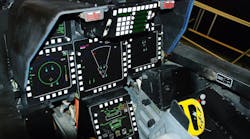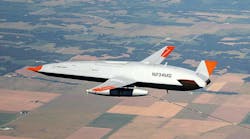ABERDEEN PROVING GROUND, Md., 30 June 2013. Radar experts at the Lockheed Martin Corp. Lockheed Martin Mission Systems and Training (MST) segment in Liverpool, N.Y., will build anti-artillery and counter-mortar radar systems for the U.S. Army under terms of a $605.1 million contract announced last week.
Officials of the Army Contracting Command at Aberdeen Proving Ground, Md., awarded the contract to Lockheed Martin to build the AN/TPQ-53 radar systems and corresponding spare parts. The Q-53 mounts a rapidly rotating radar system on a battlefield truck to detect the source of enemy artillery and mortar fire to help direct counter-battery fire.
The Q-53 counter-fire target acquisition radar is designed to help deployed Army forces locate and neutralize mortar and rocket threats quickly. The solid-state phased array AN/TPQ-53 radar detects, classifies, tracks, and determines the location of enemy indirect fire in either 360- or 90-degree modes.
This sensor is replacing the aging AN/TPQ-36 and AN/TPQ-37 medium-range radars now in the Army’s inventory, Lockheed Martin officials say.
Mounted on its five-ton Oshkosh Family of Medium Tactical Vehicles (FMTV) truck, the Q-53 can be deployed and integrated rapidly into the tactical battlefield with heavy, medium, and light forces.
The target acquisition subsystem contains the radar on the truck, which tows the power generator. This package performs all essential missions of the Q-53 for short durations. A second truck carries an operations control shelter, backup power generator, and two additional soldiers for sustained operations.
Soldiers also can operate the Q-53 remotely using a laptop computer or from the climate-controlled shelter. The radar’s software enables it to interface with the Army battle command systems.
Compared to currently deployed systems, the Q-53 offers greater mobility, and reduced crew size, Lockheed Martin officials say.
For more information contact Lockheed Martin MST online at www.lockheedmartin.com/us/mst, or the Army Contracting Command Aberdeen at www.acc.army.mil/contractingcenters/acc-apg.



